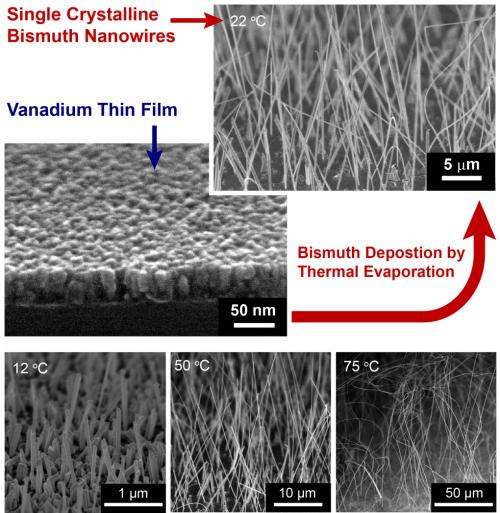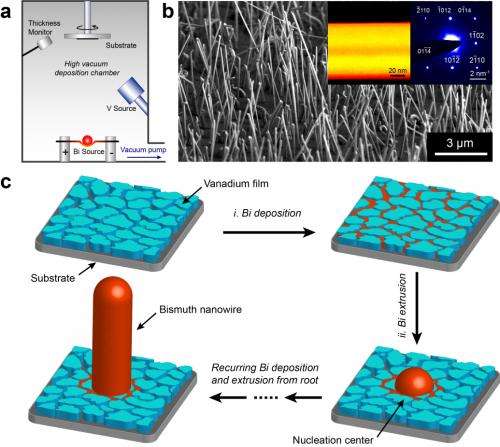Scalable growth of high quality bismuth nanowires

Bismuth nanowires have intriguing electronic and energy-harvesting application possibilities. However, fabricating these materials with high quality and in large quantities is challenging.
A group at the CFN, Brookhaven National Laboratory, has demonstrated a new technique to produce single- crystal nanowires atop arbitrary substrates, including glass, silicon, and metal, when an intermediate layer of vanadium is present. The simplicity of the technique and the universality of the mechanism open a new avenue for the growth of nanowire arrays of a variety of materials.
This is the first report on the high yield (>70%) synthesis of single crystalline bismuth nanowires, a material with potentially exploitable and intriguing thermoelectric properties. This technique produces bismuth nanowires in quantities limited only by the size of the substrate on which they are deposited. The dimensions of the bismuth nanowires can be tuned over a very wide range simply by varying the substrate's temperature. Further, in contrast with other fabrication methods, with this new technique there is no need for a catalyst to activate the production of the nanowires, thus avoiding inevitable contamination and enabling high-quality material.
CFN Capabilities: CFN's Materials Synthesis and Characterization, Electron Microscopy, and Advanced UV and X-ray Probes Facilities were used for synthesis of nanowires and their structural characterization.

More information: "Surface-energy induced formation of single crystalline bismuth nanowires over vanadium thin film at room temperature." Nano Letters 14, 5630–5635 (2014) DOI: 10.1021/nl502208u
Journal information: Nano Letters
Provided by Brookhaven National Laboratory




















